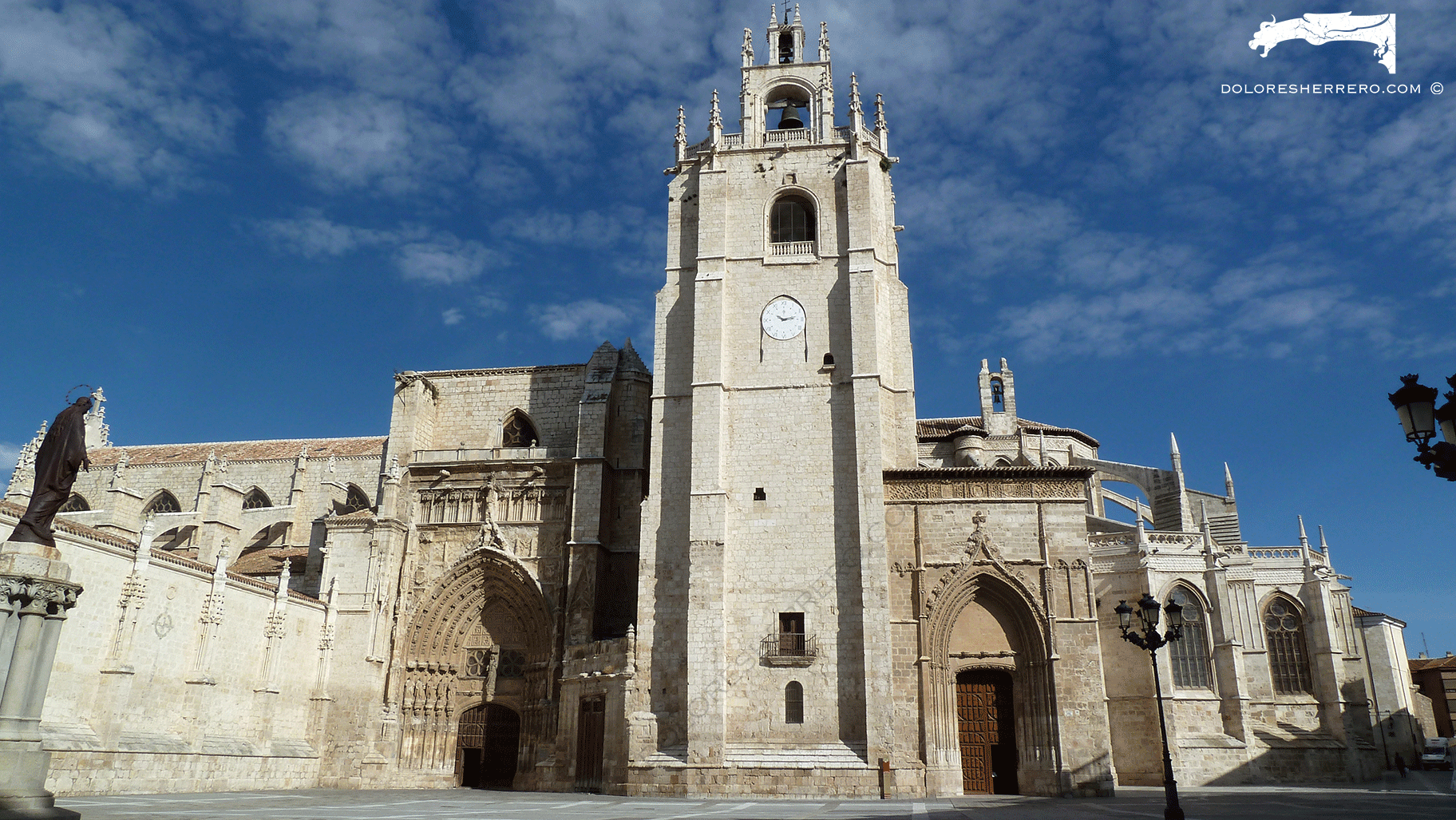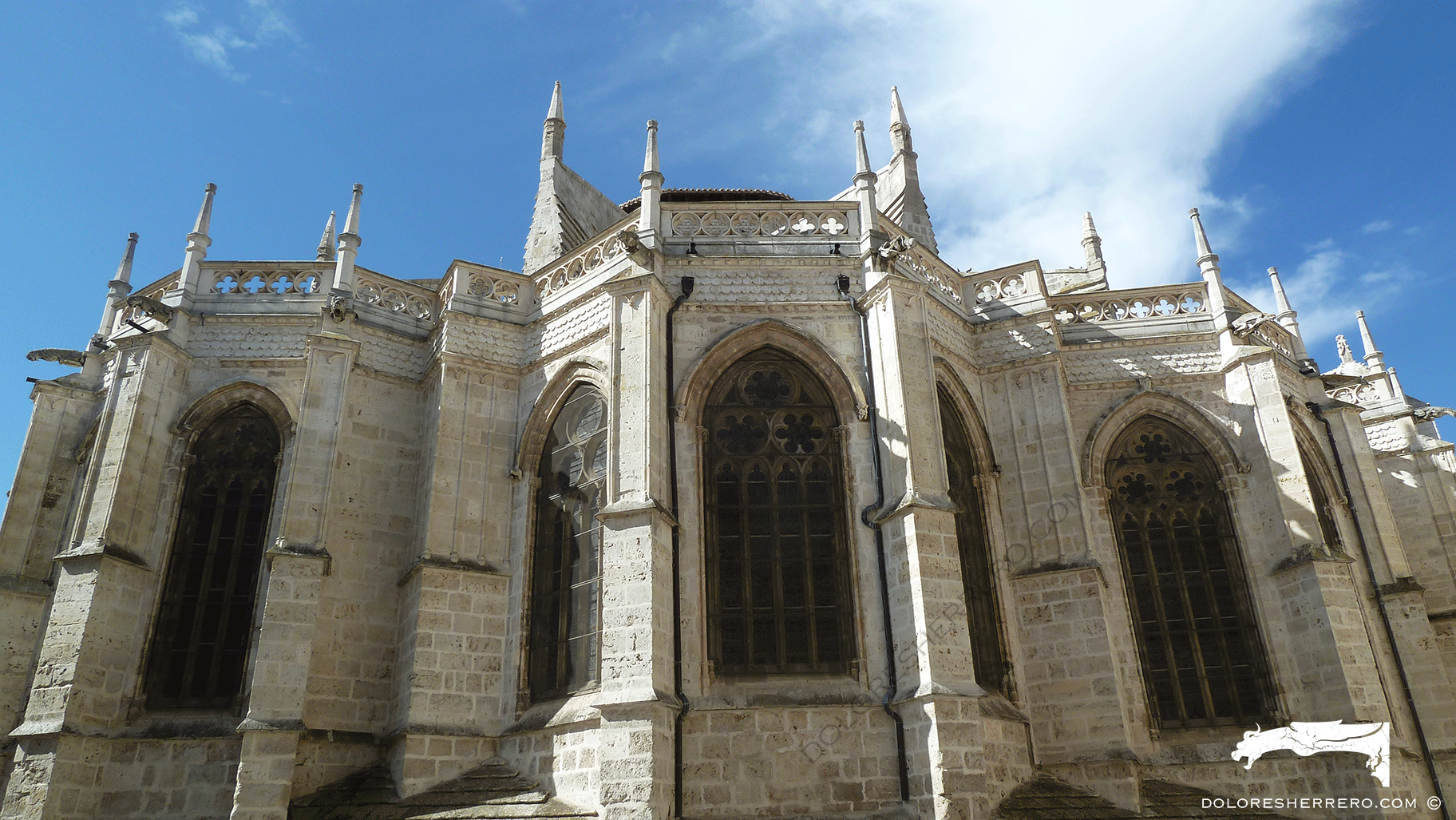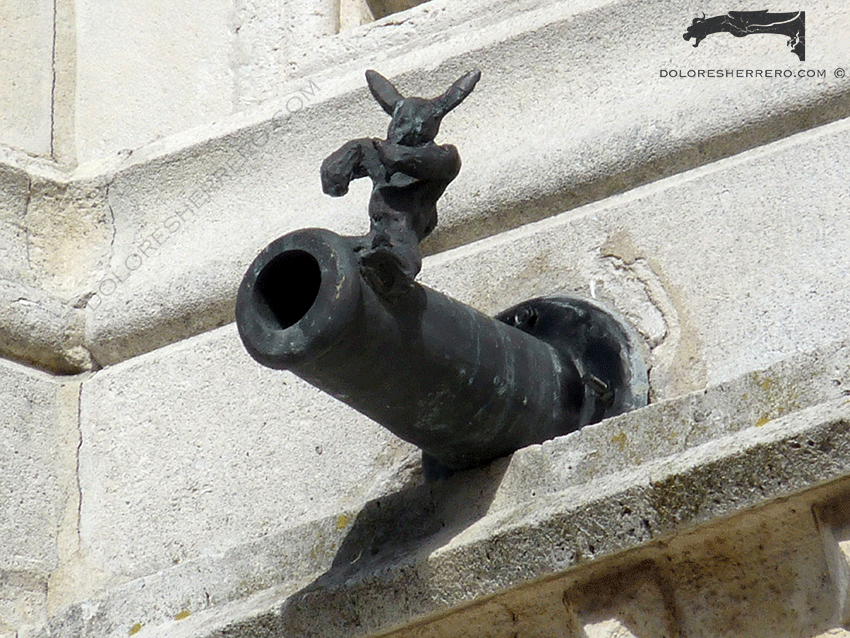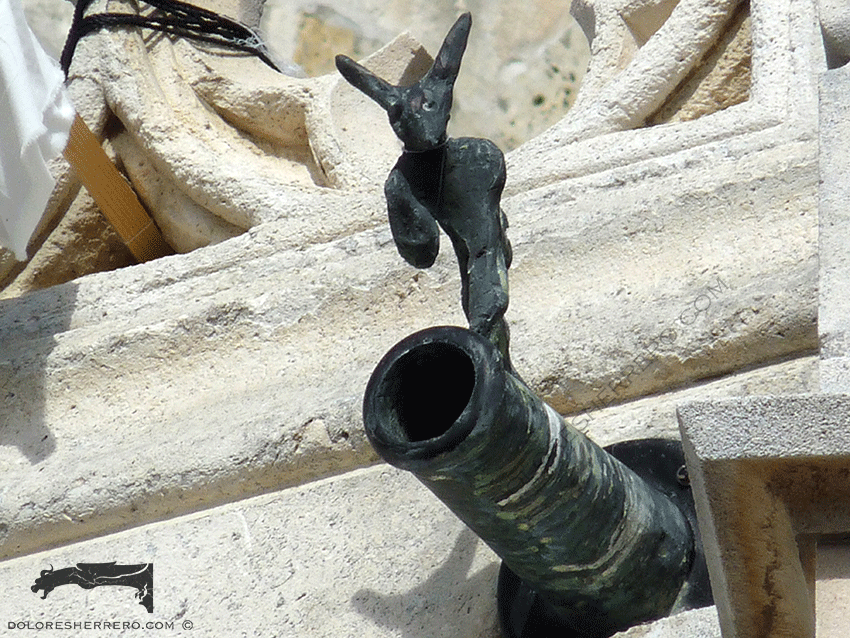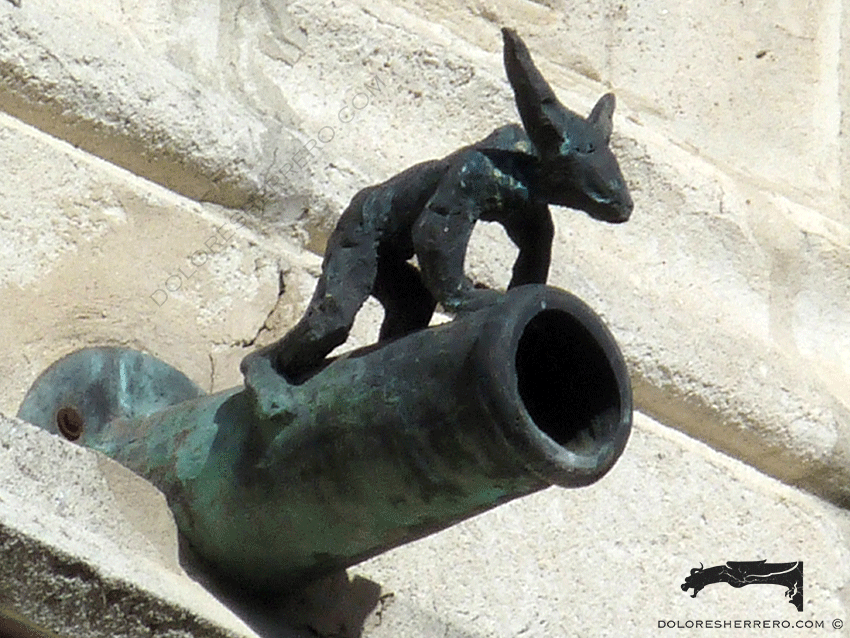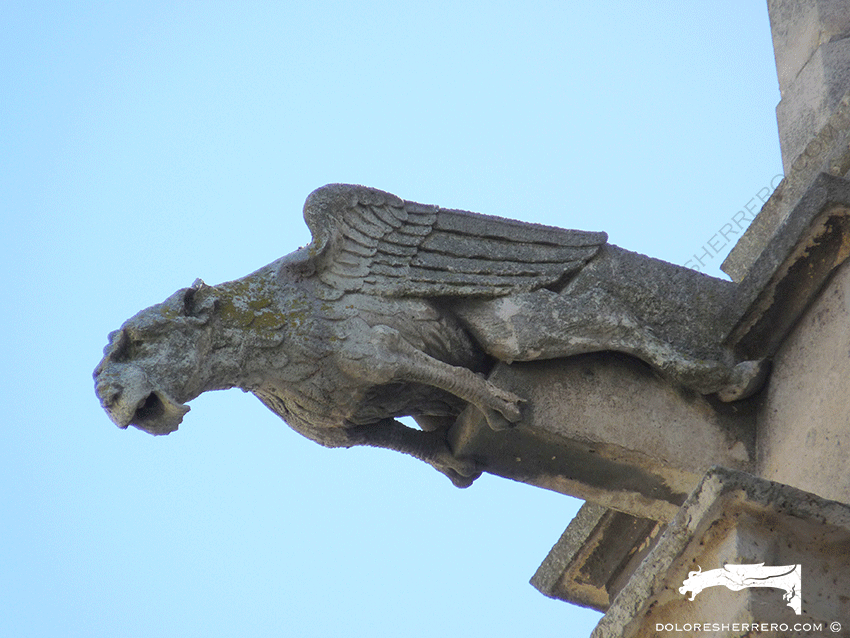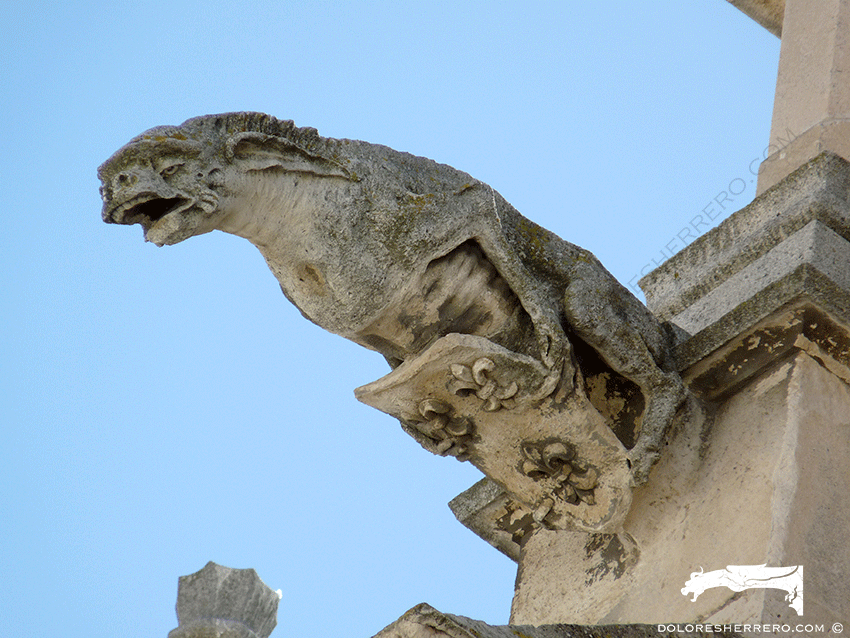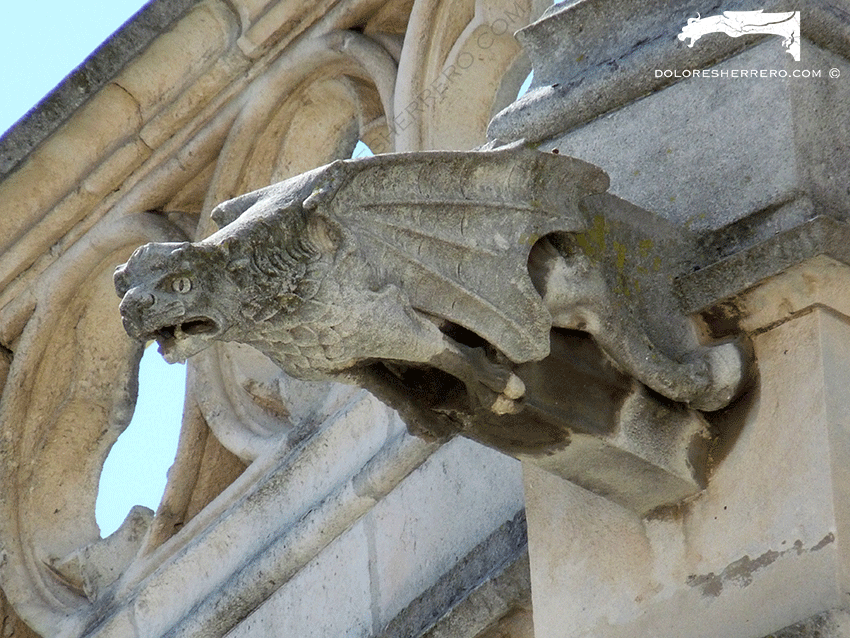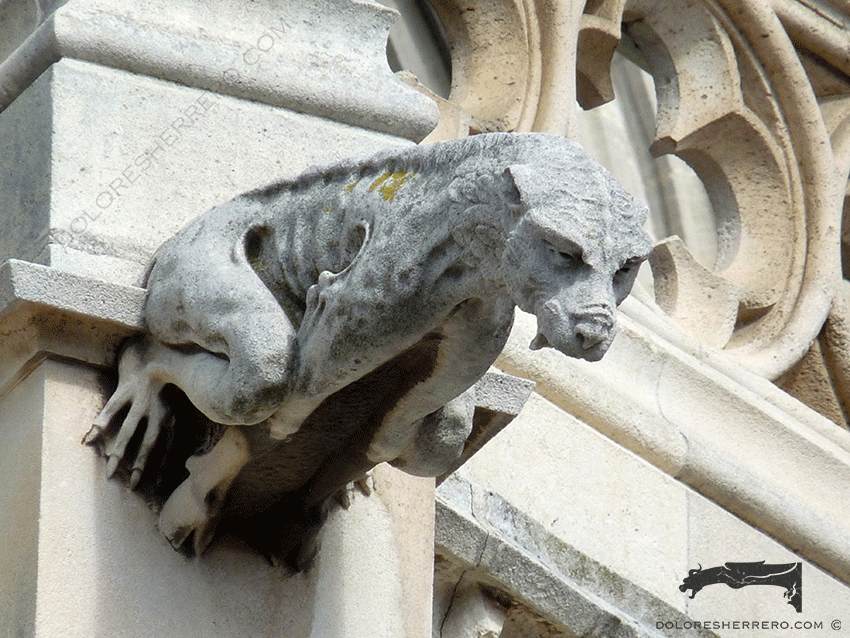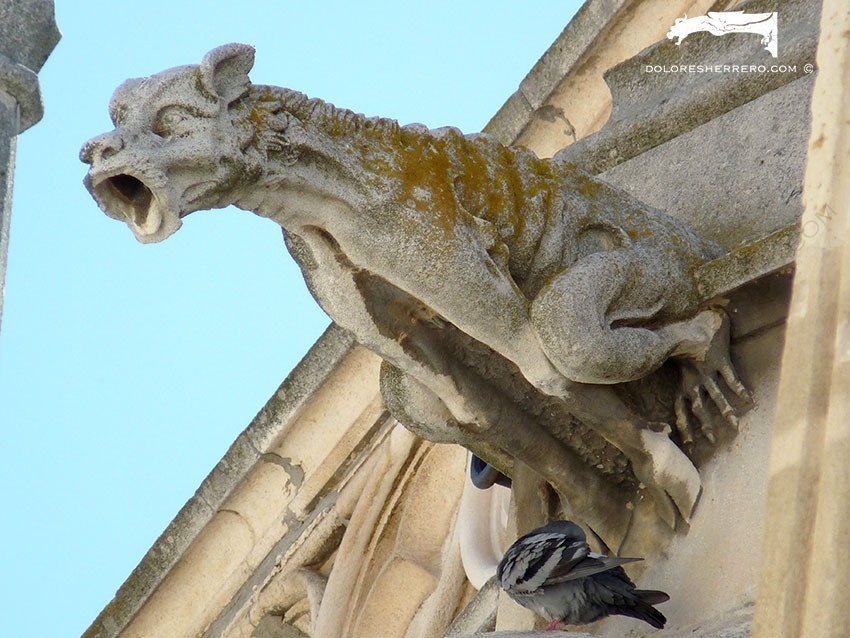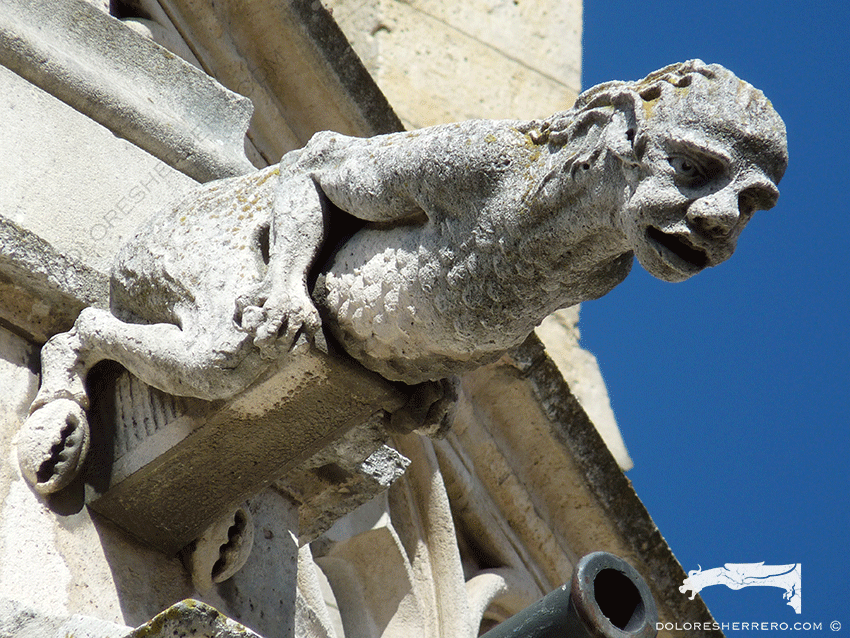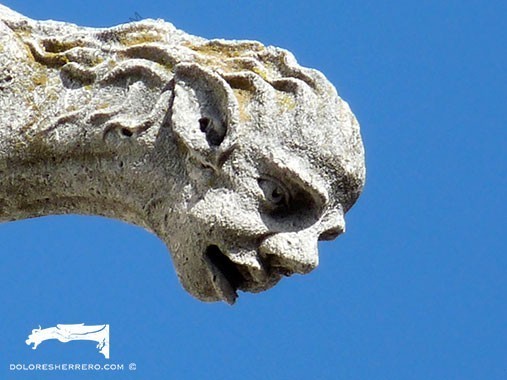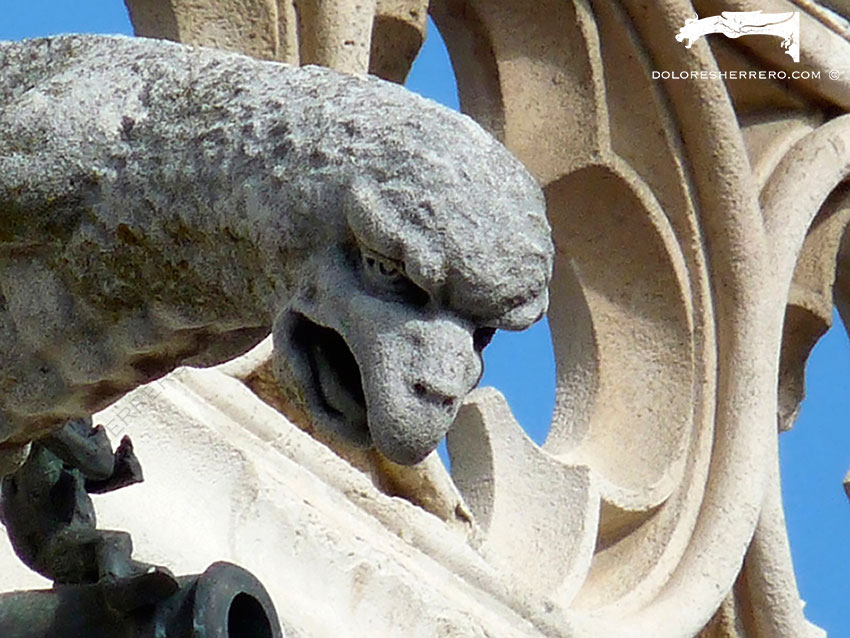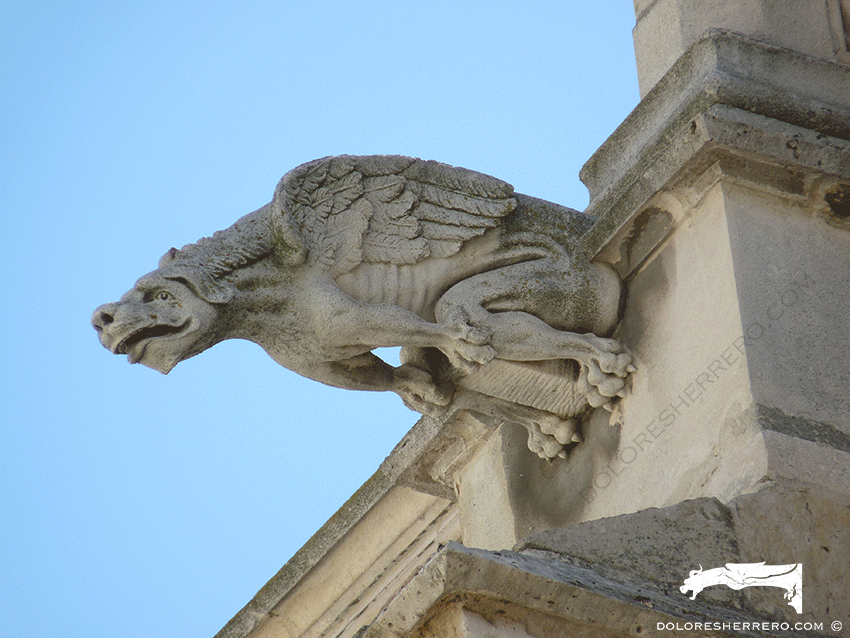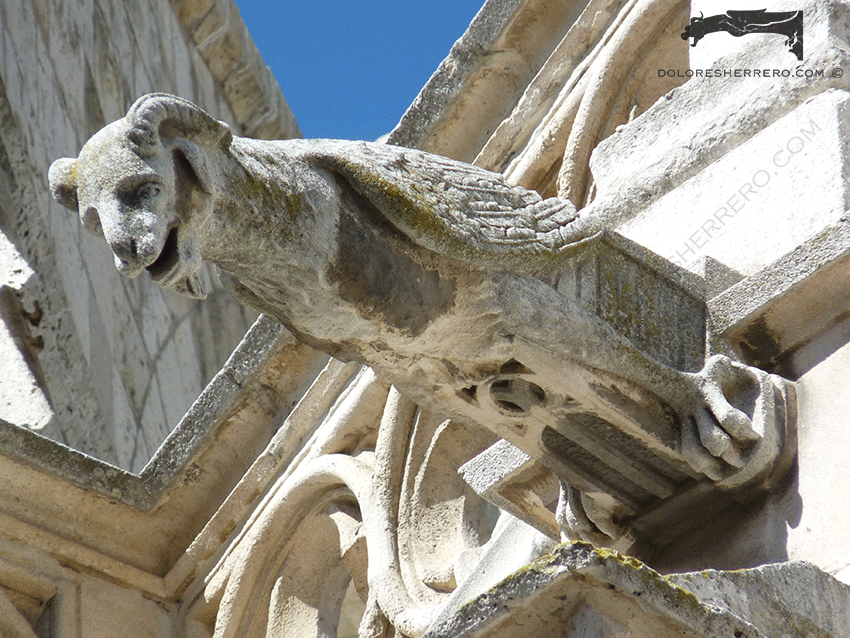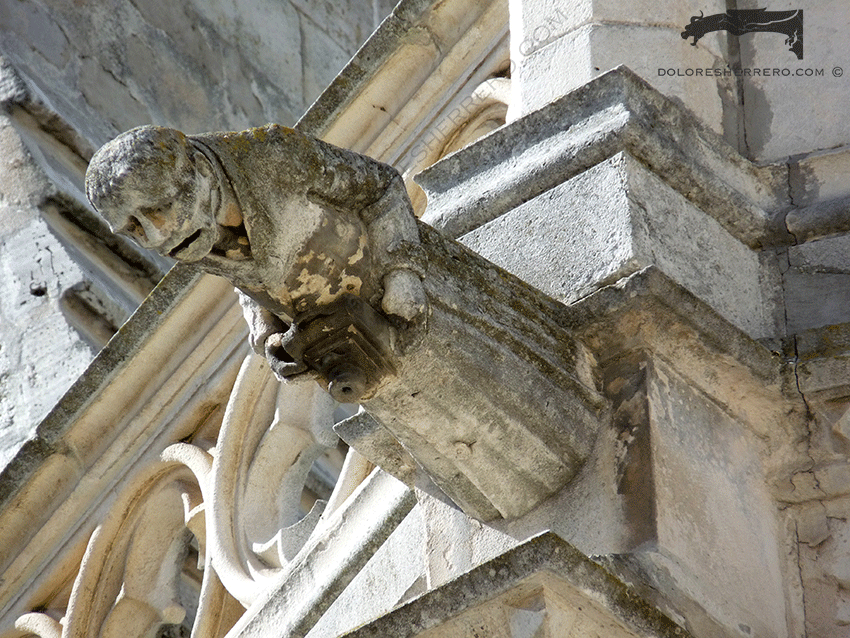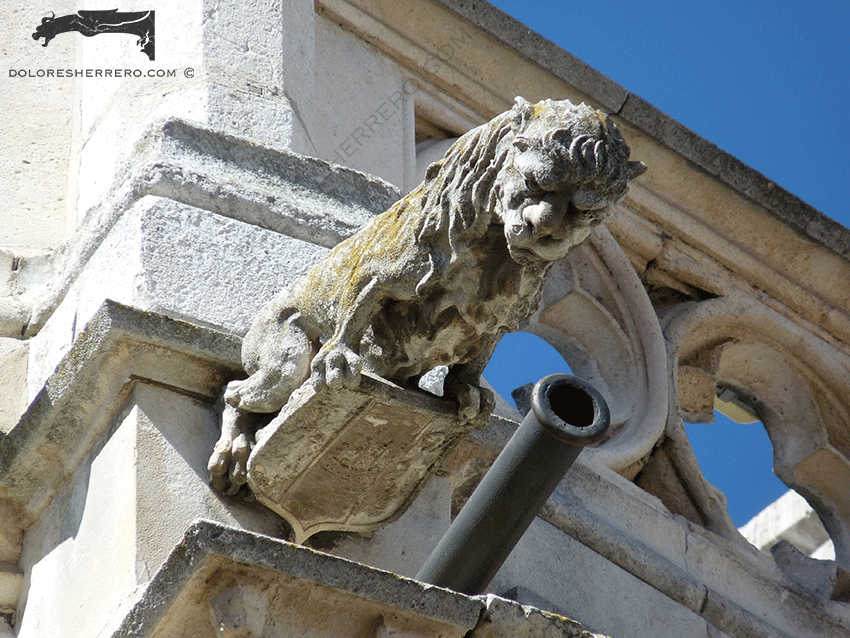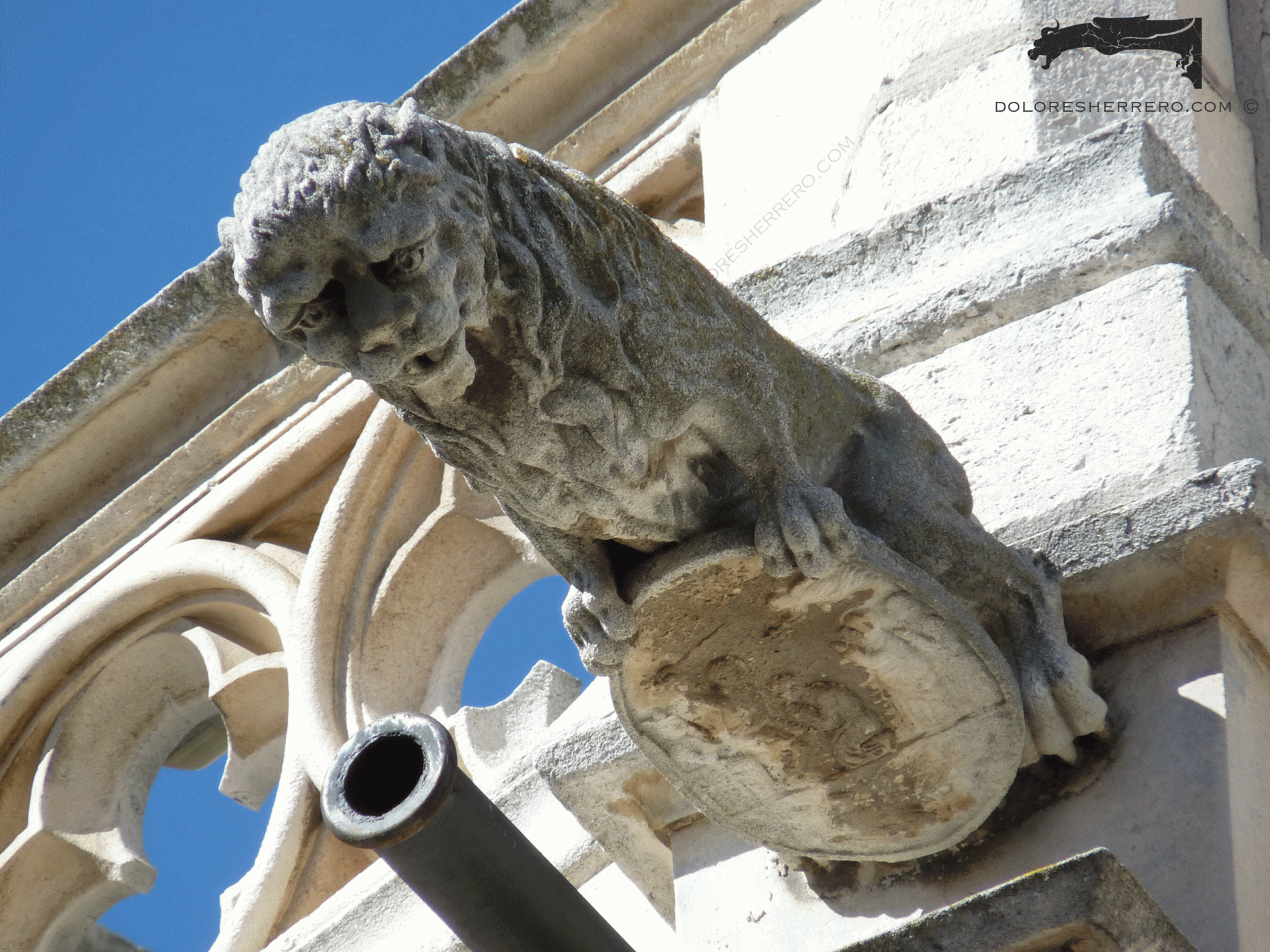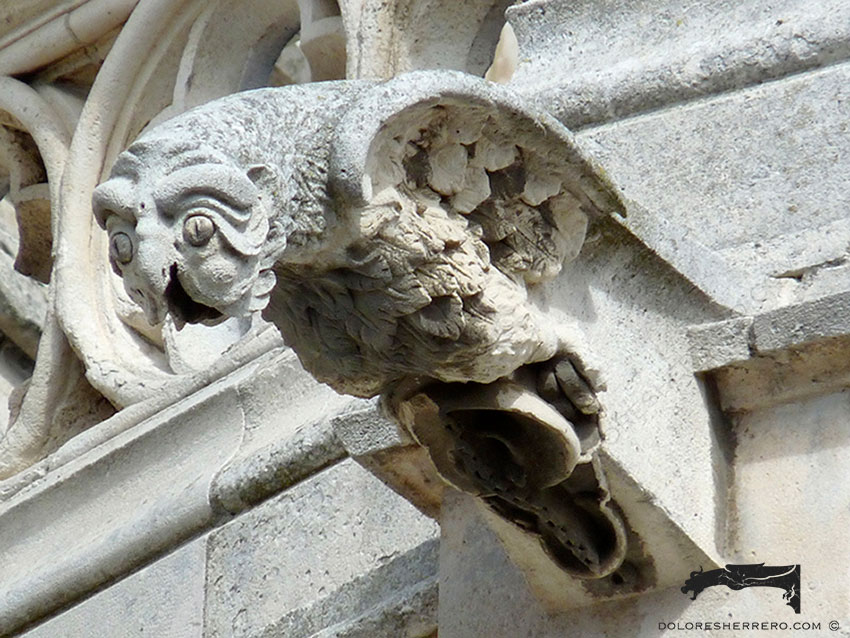Today we are going to discover one of the most beautiful and impressive sets of gargoyles to be found anywhere in Spain: the gargoyles on the east side of Palencia Cathedral.
First, a brief history of the building: during the second half of the twelfth century and the early years of the thirteenth century, a Romanesque cathedral was built that stood out for both its chronology and dimensions. The building was consecrated in 1219; however, only a few fragments remain, as it was demolished in the fourteenth century. The first stage of the construction of the Gothic cathedral began in 1321 and continued until 1426, during which time the ambulatory and its chapels – a true architectural marvel – were built. Towards the end of the nineteenth century the cathedral required further work, particularly on two of the chevet’s flying buttresses. The work was carried out between 1884 and 1896.
The Gargoyles of the Palencia Apse
On both the old transept and the apse we can find two different types of gargoyle: the marvellous and extraordinary stone sculptures located on the buttresses and below the pinnacles; and the series of small metal gargoyles in the shape of miniature devils, positioned on top of the drainpipes.
They are varied in type, ranging from human figures and real-world animals, to animalistic monsters and demons. The Devil is the most frequently depicted figure; this preponderance is a common feature of cathedrals and is probably related to the juxtaposition of that which is evil and sinful (outside the cathedral) with that which is good and holy (inside the cathedral). It is also connected to the idea, common during the Middle Ages, of demonstrating the existence of evil before the masses.
Demon
In the post on gargoyles made of metal and other materials we discussed the cathedral’s miniature devils, which consist of simply drawn figures with long horns, eyes, a pointed snout and a crest on their back. They appear in various positions: lying down with their arms resting on the pipe; sitting with their arms raised; standing with one arm raised and the opposite leg extended in a walking pose; lying down with their arms and legs resting on the pipe; or sitting and lifting their arms upwards. These gargoyles are small and dynamic; they have a mocking and playful appearance and articulate a sense of movement. Figures of this type can also be found on the walls of the historic city centre of Ibiza (Spain).
The stone demons are truly magnificent gargoyles. They are replete with typically demonic details, carved with exceptional skill and given tremendous expressiveness. Features include clearly delineated ribs and throats; crests on their forehead or back; large mouths with teeth or fangs; eyes with eyelids and pupils (some vertical); pointed ears; unpleasant-looking bodies and skin with leathery hides, wrinkles, feathers and scales; claws and long nails; whiskers; stuck-out tongues; appendages or small horns on their foreheads; bird-like or bat-like wings; the bodies of animals (birds); the heads of monsters; wrinkled snouts; and cloven hooves.
- Palencia Cathedral (Spain)

Two examples in particular stand out for their original features and sculptural beauty. The first is an extraordinary figure depicting an anthropomorphic demon, with wrinkled skin and scales over part of its body. It has claw-like hands, and feet with enormous pincers; a feature also found on gargoyles at other cathedrals, such as Burgos (Spain) Its head is that of a woman, with lank, dishevelled hair: a symbol of savagery, bestiality or power, which according to some experts derives from the greasy, shaggy hair of the barbarians. With pointed ears and exaggerated, negroid-type features, this is a truly disturbing gargoyle.
The second gargoyle is a gastrocephalic demon with a long neck and clearly delineated ribs. It has human arms and hands, webbed reptilian feet with long claws, and the head of a bird with an eagle’s beak. The second head, located in the figure’s belly, resembles a green man with its enormous eyes, nose and mouth amidst a mass of foliage.
- Palencia Cathedral (Spain)
- Palencia Cathedral (Spain)
Animal Monster
The animalistic monsters are hybrids created from various animal parts. Examples include a winged dog and a creature with the body of an eagle and the head of a ram, which gives the gargoyle a demonic appearance. In both cases, the carving is extraordinarily detailed: musculature, skin texture (wrinkles, fur, leatheriness), wings, paws, claws, heads with perfectly drawn eyes, and mouths with tongues and teeth.
Human
The two human figures are particularly unusual. The first depicts a skeleton with its arms crossed over its chest in a kind of self-embrace; it is a rather terrifying image that symbolises death. The use of skeletons and skulls to represent death is a common theme in art. In some images, the skeleton is holding a scythe in one hand, symbolising the brevity of life; and an hourglass in the other hand, symbolising the speed with which time passes. Although skeletons are the personification of death, they can also represent the Devil.
The second gargoyle depicts the cathedral’s famous photographer. He is standing upright, with a camera in his hands. Around his neck we can make out a shirt collar and part of a tie, and his overcoat reaches down to his feet. His face is downcast, with a sad expression that gives him a mournful and highly original appearance, albeit entirely anachronistic.
Animal
Lastly, the three real-world animals consist of two lions and a bird with an appearance resembling that of a parrot or parakeet. The lions are magnificent, with perfect anatomies and exceptional detailing on their bodies and heads (manes, snouts, teeth, and eyes with pupils). They are seated, with their paws resting on decorated shields. Although the decoration on one of the shields is very worn, we can make out three sections: the one in the middle contains a building or ship, while those on either side both feature the same plant motif, along with snake’s heads at the top. The other shield depicts a man kneeling in veneration before a figure on a throne. Behind the kneeling man are several standing figures and what appears to be an angel.
The third animal is a possible parrot or parakeet, which stands out for its abundant and eye-catching plumage. Its head is particularly elaborate, with highly pronounced and exceptionally detailed features (eyebrows, eyes, beak).
It is interesting to note that some gargoyles have decorations on the shields they are holding (as is the case with the lions and also with one of the demons, which is holding a shield decorated with a fleur-de-lis) or on the blocks of stone supporting them, in the form of stripes, geometric designs, texturing, or even a cavity containing a large chain.
In short, the gargoyles on the east side of the cathedral are exceptional and magnificent. They are highly original, expressive, terrifying and disturbing, carved with great attention to detail (including perfect anatomical detail) and tremendous artistry. As sculptures, they are stunningly beautiful. Moreover, the stone gargoyles have been perfectly preserved. Nor should we overlook the metal gargoyles: miniature devils that are highly singular, dynamic and a great deal of fun. As you can see, all of these gargoyles are unique, carved with great skill and imbued with tremendous creativity and beauty. They form an immensely valuable part of the heritage not only of Castilla y León, but of Spain as a whole.
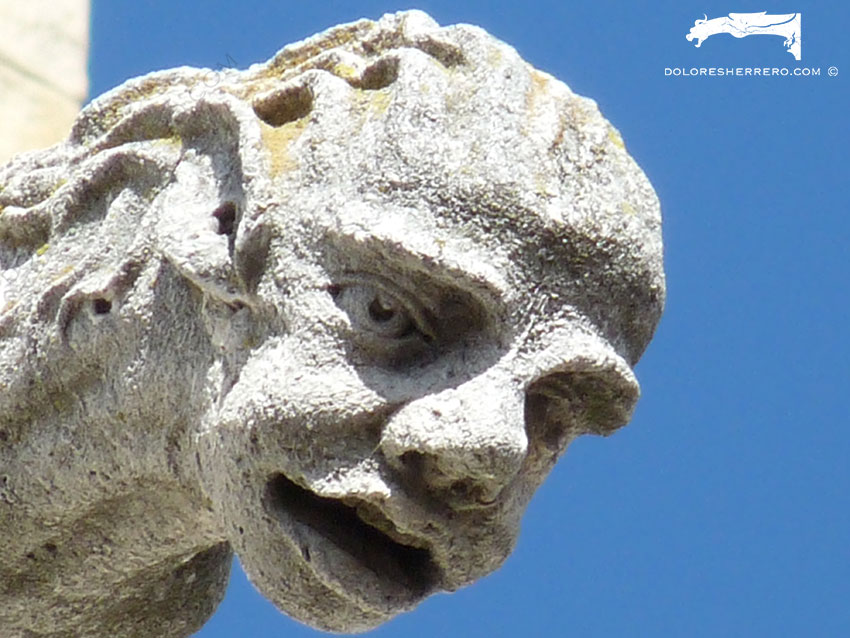
Bibliography consulted
MARTÍNEZ, R., La Catedral de Palencia. Historia y Arquitectura, Palencia, Merino, 1988.
PÉREZ MONZÓN, O., Catedrales góticas, Madrid, Ediciones Jaguar, S. A. Catedrales de España, 2003.

Doctor of Art History and researcher specializing in the study of gargoyles.
I am Dolores Herrero Ferrio, and my thesis, “An Approach to the Study of Gargoyles of Gothic Cathedrals in Castilla and León”, is dedicated to the study of these fascinating figures.
If you like gargoyles and art history, you will also enjoy my book, “The Gargoyle and Its Iconography,” a book I have written with great care for those interested in the world of gargoyles.
I have created my own Encyclopedia of Gargoyles, a Gargopedia to share with you, where you will discover all the secrets and wonders of these enigmatic sculptures.
I hope you enjoy this Gargopedia as much as I have enjoyed creating it, and remember that each gargoyle has a story to tell, and here you will discover them all.
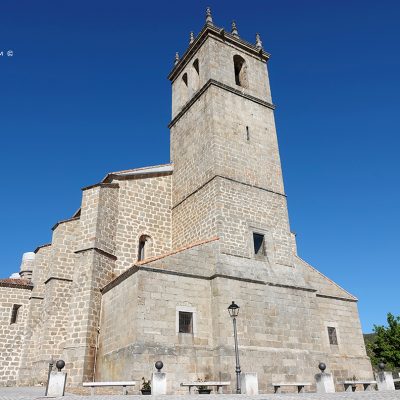 The Gargoyles of Robledo de Chavela’s Church, Spain: Stone Guardians of Madrid’s Skies
The Gargoyles of Robledo de Chavela’s Church, Spain: Stone Guardians of Madrid’s Skies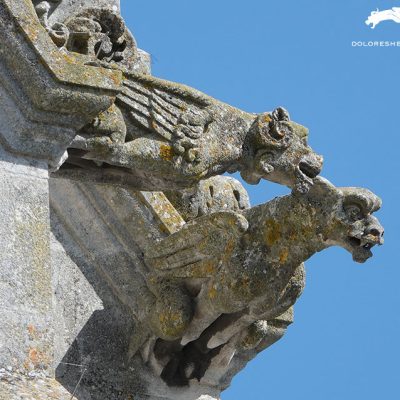 The Gargoyles of the Blois Cathedral
The Gargoyles of the Blois Cathedral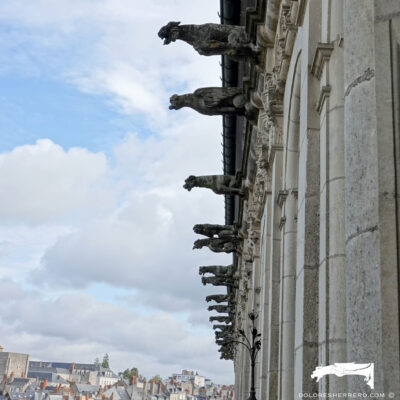 The Gargoyles of Château Royal de Blois
The Gargoyles of Château Royal de Blois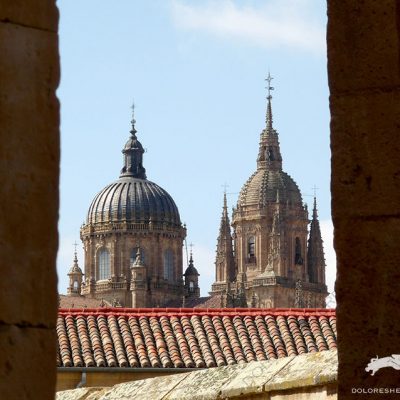 The Exceptional Gargoyles of the West Facade of Salamanca Cathedral
The Exceptional Gargoyles of the West Facade of Salamanca Cathedral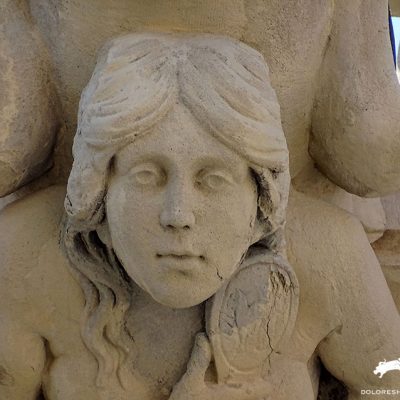 The Gargoyles of the University of Alcalá de Henares: A Sculptural Legacy of Madrid, Spain’s Heritage
The Gargoyles of the University of Alcalá de Henares: A Sculptural Legacy of Madrid, Spain’s Heritage